The Good, the Bad and the Ugly invader
History from the Invader's Perspective
A brief historical overview
ακολουθεί κείμενο στα ελληνικά
Greece entered World War II with the invasion of Italian troops in Epirus from Albania on October 28, 1940. The Greeks not only managed to hold back the Italians but also pushed them deep into Albania (one of the reasons Greece celebrates the beginning of WWII, not the end of it) until April 1941, when the Germans invaded from the north after conquering Yugoslavia in a few days and while preparing for the large offensive against the Soviet Union.
On April 27, 1941, German troops entered Athens, accompanied by parades and ceremonies during which the Germans announced their victory. Contemporary sources report that Italians also participated in these parades, wishing to march as victors despite their defeat in Albania. It is said that the Germans were hesitant about this idea as they did not want to provoke the Greeks, whose fighting spirit they had previously praised, but they eventually yielded to Italian pressure, though they could not avoid sarcastic remarks about their allies. Later in the same year, the Italians held a more formal military parade.
The Germans subsequently maintained control over Greece’s most strategically important areas, including Athens, Thessaloniki, and much of Crete, while the rest of the country was divided into control zones by Germany’s Axis allies: Italy and Bulgaria. Italy controlled most of mainland Greece, Bulgaria controlled eastern Macedonia and Thrace—territories it had long sought since the Balkan Wars of 1912/13. At the same time, a collaborationist occupation government composed of Greeks cooperating with the Germans was established. It is worth noting, something not widely known, that the Bulgarian occupation included efforts to Bulgarize the areas they controlled, with changes to store signs in Bulgarian, teaching only the bulgarian language in schools, and other measures. The Bulgarian measures were so harsh that many Greeks from Macedonia and Thrace, considering the Germans more “lenient,” migrated to the German-controlled zone around Thessaloniki, surely making the Bulgarians the ugly of our title.
After the Italian surrender in September 1943, historiography focused on the numerous Nazi crimes. Books and films like “Captain Corelli’s Mandolin,” featuring the Italian Captain Nicholas Cage who falls in love with a virtuous Greek girl Penelope Cruz, until the surrender pits them against the Germans, perpetuated the myth of the “good Italian.” However, the truth is that the Italians in Greece between 1941-1943 committed numerous atrocities including executions of civilians in retaliation for resistance activities, torture, confiscations of property, looting, and rapes. In parts of mainland Greece and the islands, civilians, including elderly and women with children, were executed en masse, and there were cases of harsh executions of prisoners and partisans. They also looted churches and archaeological sites and destroyed villages supporting the resistance.
Things changed for the Italians after their surrender in September 1943. German forces treated them as enemies and violently sought to disarm and capture them. Many Italian units surrendered, but two divisions—the Pinerolo Division in Thessaly and especially the Acqui Division in Kefalonia (the division of Captain Corelli)—resisted. After their surrender, a mass massacre of Italian soldiers by the Germans began, following the drowning of about 3,000 when German ships transporting them to concentration camps were sunk by Allied submarines. An interesting note is that some Italians—few but not insignificant in number—joined the Greek resistance groups they had previously fought against in an effort to escape the Germans.
The invader’s perspective:
Also of interest is the testimony of an Italian descendant of one of the soldiers of the Pinerolo Division:
“My maternal grandfather, Francesco Colabella (Second from left in the second row) and his comrades in the Royal Italian Army.
As a private during World War II, my grandfather saw combat as a field artillery gunner in Albania and Greece with the 2nd Battalion, 18th Gran Sasso Artillery Regiment of the 24th Pinerolo Infantry Division. When Italy signed an armistice with the Allies in September 1943, the Pinerolo Division refused repeated German demands to surrender, volunteering to fight against them alongside the partisans of the Greek People’s Liberation Army (Ellinikós Laïkós Apeleftherotikós Stratós, ELAS) in the defense of Larissa and then in the Pindus Mountains, an alliance between the two factions made possible by members of the Greek Mission of the British Special Operations Executive.
When the Germans completely surrounded them in mid-October 1943, the ELAS partisans turned on the Pinerolo Division, which they felt had not fought hard enough against the Germans, especially after they failed to take the German airfield at Larissa the previous month, they captured most of the Pinerolo Division, used their prisoners for slave labor and then shot them. The SOE never forgave ELAS for its treachery and ceased its support for the communist Greek resistance group, leaving its partisans to fight the Germans on their own. Those soldiers of the Pinerolo Division who escaped this fate, my grandfather among them, defended themselves and their fellow soldiers, fighting in separate companies against the ELAS partisans as they withdrew from their positions, dug in elsewhere in the Pindus Mountains and continued to fight against the Germans until their positions were overrun and they were captured.
My grandfather was taken to Lübeck, Germany, where he was stripped of his rights as a POW under the Geneva and Hague Conventions and branded an Italian Military Internee, starved, forced into slave labor as a porter in a foundry and later registered by the Nazis as a civilian worker to deny him the protection of the Red Cross. To survive, he and his fellow POWs took turns sneaking out of their POW camp nightly to scrounge for potato skins in the garbage put out by residents nearby. This carried the risk of being shot by the camp guards, the SS, the SD or the Gestapo if any POWs were caught. Their survival, however, including that of my grandfather, depended upon the assumption of this risk. He was finally liberated by the British 11th Armoured Division at 1 PM on May 2, 1945, just three hours ahead of the Soviet advance. His ordeal lasted 19 months and was followed by four more months of convalescence under the care of his liberators before he finally returned to Italy on September 8, 1945.”
Until the next stack, ἐρρῶσθε καὶ εὐδαιμονεῖτε.
Whether it's just the price of a single frappé coffee or a book, every contribution matters. Donations help cover research, writing, and the resources needed to keep sharing my passion for uncovering the past and bringing history, archaeology, and culture to life.
ακολουθεί κείμενο στα ελληνικά
O καλός, ο κακός και ο άσχημος εισβολέας
H Ιστορία από την πλευρά του κατακτητή
Μια μικρή ιστορική αναδρομή
Η Ελλάδα εισήλθε στον Β΄Π.Π. με την εισβολή των ιταλικών στρατευμάτων στην Ήπειρο από την Αλβανία, την 28η Οκτωβρίου 1940. Οι Έλληνες όχι μόνο κατάφεραν να συγκρατήσουν τους Ιταλούς, αλλά και να τους απωθήσουν βαθιά μέσα στην Αλβανία, μέχρι και τον Απρίλιο του 1940 όταν και εισέβαλαν οι Γερμανοί από το Βορρά, αφού κατέκτησαν τη Γιουγκοσλαβία μέσα σε λίγες ημέρες και ενώ προετοιμάζονταν για τη μεγάλη επίθεση στη Σοβιετική Ένωση.
Στις 27 Απριλίου 1941, πραγματοποιήθηκε η είσοδος των γερμανικών στρατευμάτων στην Αθήνα, η οποία συνοδεύτηκε από παρελάσεις και τελετές, όπου οι Γερμανοί ανακοίνωσαν την επικράτησή τους. Πηγές της εποχής αναφέρουν ότι στις παρελάσεις συμμετείχαν και Ιταλοί, οι οποίοι επιθυμούσαν να παρελάσουν ως νικητές παρά την ήττα τους στην Αλβανία. Λέγεται ότι οι Γερμανοί ήταν διστακτικοί στην ιδέα αυτή, καθώς δεν ήθελαν να προκαλέσουν τους Έλληνες, τη μαχητικότητα των οποίων είχαν εκθειάσει προηγουμένως, αλλά τελικά υπέκυψαν στις πιέσεις των Ιταλών χωρίς να αποφύγουν τα δηκτικά σχόλια προς τους συμμάχους τους. Οι Ιταλοί μάλιστα πραγματοποίησαν μία πιο επίσημη στρατιωτική παρέλαση αργότερα μέσα στο 1941.
Οι Γερμανοί στη συνέχεια διατήρησαν υπό τον έλεγχο τους τις σημαντικότερες στρατηγικά περιοχές της Ελλάδας, μεταξύ των οποίων την Αθήνα και τη Θεσσαλονίκη και μεγάλο μέρος της Κρήτης, ενώ η υπόλοιπη χώρα μοιράστηκε σε ζώνες ελέγχου των συμμαχικών προς τη Γερμανία χωρών, της Ιταλίας και της Βουλγαρίας, με την Ιταλία να ελέγχει το μεγαλύτερο μέρος της ηπειρωτικής Ελλάδας και τη Βουλγαρία την ανατολική Μακεδονία και Θράκη, κάτι που προσπαθούσε να γίνει πραγματικότητα από τους βαλκανικούς πολέμους του 1912/13. Παράλληλα τοποθετήθηκε στην Ελλάδα κατοχική κυβέρνηση, που συγκροτήθηκε από Έλληνες συνεργάτες των Γερμανών. Αξίζει να σημειωθεί εδώ κάτι που δεν είναι ευρύτερα γνωστό, ότι η Κατοχή των Βουλγάρων ενείχε και στοιχεία εκβουλγαρισμού των περιοχών που ήλεγχαν οι Βούλγαροι, με αλλαγές στις επιγραφές των καταστημάτων στα βουλγαρικά, διδασκαλία βουλγαρικών στα σχολεία και άλλα μέτρα. Ήταν τόσο σκληρά τα μέτρα των Βουλγάρων μάλιστα , που πολλοί Έλληνες της Μακεδονίας και της Θράκης θεωρώντας τους Γερμανούς πιο “ήπιους”, μετανάστευσαν στη γερμανική ζώνη ελέγχου γύρω από τη Θεσσαλονίκη, κάνοντας τους Βούλγαρους σίγουρα τους άσχημους του τίτλου μας.
Μετά τη συνθηκολόγηση των Ιταλών τον Σεπτέμβριο του 1943 η ιστοριογραφία επικεντρώθηκε στα δεκάδες εγκλήματα των Ναζί. Βιβλία και ταινίες όπως το Μαντολίνο του Λοχαγού Κορέλι με τον Ιταλό Λοχαγό Νίκολας Κέιτζ να ερωτεύεται την αγαθή ελληνοπούλα Πενέλοπε Κρουζ, μέχρι που η συνθηκολόγηση τους φέρνει αντιμέτωπους με τους Γερμανούς, συντήρησαν το μύθο του “καλού Ιταλού”. Η αλήθεια όμως είναι πως οι Ιταλοί στην Ελλάδα μεταξύ 1941-1943 πραγματοποίησαν αρκετές θηριωδίες, όπως εκτελέσεις αμάχων σε αντίποινα για αντιστασιακές ενέργειες, βασανιστήρια, κατασχέσεις περιουσιών, λεηλασίες και βιασμούς. Σε μέρη της ηπειρωτικής Ελλάδας και των νησιών εκτελέστηκαν ομαδικά κάτοικοι, συμπεριλαμβανομένων και ηλικιωμένων και γυναικοπαίδων, ενώ υπήρξαν περιπτώσεις σκληρών εκτελέσεων αιχμαλώτων και ανταρτών. Επιπλέον, λεηλάτησαν εκκλησίες και αρχαιολογικά ευρήματα, και κατέστρεψαν χωριά που υποστήριζαν τους αντάρτες.
Τα πράγματα άλλαξαν για τους Ιταλούς μετά τη συνθηκολόγηση του Σεπτεμβρίου του 1943. Οι γερμανικές δυνάμεις τους αντιμετώπισαν ως εχθρούς και επιχείρησαν να τους αφοπλίσουν και να τους αιχμαλωτίσουν βίαια. Πολλές ιταλικές μονάδες παραδόθηκαν, αλλά δύο μεραρχίες, η Μεραρχία Pinerolo στη Θεσσαλία και κυρίως η Μεραρχία Acqui στην Κεφαλονιά (η Μεραρχία του Λοχαγού Κορέλι), αντιστάθηκαν. Μετά την παράδοσή τους ξεκίνησε η μαζική σφαγή των Ιταλών στρατιωτών από τους Γερμανούς, με άλλους 3.000 να πνίγονται όταν γερμανικά πλοία που τους μετέφεραν σε στρατόπεδα συγκέντρωσης βυθίστηκαν από συμμαχικά υποβρύχια. Ενδιαφέρον επίσης έχει και η περίπτωση κάποιων Ιταλών, όχι λίγων αλλά σίγουρα μειοψηφούντων, που στην προσπάθειά τους να ξεφύγουν από τους Γερμανούς, εντάχθηκαν στις ελληνικές αντιστασιακές ομάδες που μέχρι πρότινος πολεμούσαν.
Η ιστορία από την πλευρά του κατακτητή
Ενδιαφέρον έχει η μαρτυρία ενός Ιταλού, απόγονου ενός από τους στρατιώτες της Μεραρχίας Pinerolo:
“Στη φωτογραφία βλέπετε τον παππού μου από την πλευρά της μητέρας μου, τον Francesco Colabella (δεύτερος από αριστερά, στη δεύτερη σειρά) με τους συντρόφους του στον Βασιλικό Ιταλικό Στρατό.
Ως απλός στρατιώτης κατά τη διάρκεια του Β’ Παγκοσμίου Πολέμου, πολέμησε ως οπλοβολητής στην Αλβανία και την Ελλάδα με το 2ο Τάγμα του 18ου Συντάγματος Πυροβολικού Gran Sasso της 24ης Μεραρχίας Πεζικού Pinerolo. Όταν η Ιταλία υπέγραψε ανακωχή με τους Συμμάχους τον Σεπτέμβριο του 1943, η Μεραρχία Pinerolo αρνήθηκε να παραδοθεί στους Γερμανούς και προσφέρθηκαν να πολεμήσουν με τον Ελληνικό Λαϊκό Απελευθερωτικό Στρατό (Ε.Λ.Α.Σ., σ.σ. κομμουνιστές αντάρτες) στην άμυνα της Λάρισας και μετά στα βουνά της Πίνδου. Η συμμαχία ανάμεσα στους δύο σχηματισμούς έγινε δυνατή με τη μεσολάβηση μελών της ελληνικής αποστολής της Βρετανικής Special Operations Executive (S.O.E.).
Όταν οι Γερμανοί τους περικύκλωσαν πλήρως στα μέσα Οκτωβρίου 1943, οι αντάρτες του ΕΛΑΣ στράφηκαν κατά της Μεραρχίας Pinerolo, θεωρώντας ότι αυτή δεν πολέμησε αρκετά σκληρά τους Γερμανούς, ιδίως μετά την αποτυχία να καταλάβουν τον γερμανικό αεροδιάδρομο στη Λάρισα τον προηγούμενο μήνα. Οι περισσότεροι από τη Μεραρχία Pinerolo συνελήφθησαν από τους αντάρτες, χρησιμοποιήθηκαν ως σκλάβοι εργασίας και στη συνέχεια εκτελέστηκαν. Η SOE δεν συγχώρησε ποτέ τη προδοσία του ΕΛΑΣ και σταμάτησε την υποστήριξή της προς το κομμουνιστικό ελληνικό αντάρτικο. Οι στρατιώτες της Μεραρχίας Pinerolo που γλύτωσαν, ανάμεσά τους και ο παππούς μου, υπερασπίστηκαν τον εαυτό τους και τους συναδέλφους τους, πολεμώντας σε αντίπαλες προς τον ΕΛΑΣ αντιστασιακές ομάδες και συνεχίζοντας να πολεμούν ενάντια στους Γερμανούς μέχρι τελικά να συλληφθούν.
Ο παππούς μου μεταφέρθηκε στο Λίμπεκ της Γερμανίας, όπου του αφαιρέθηκαν τα δικαιώματα αιχμαλώτου πολέμου σύμφωνα με τις Συμβάσεις της Γενεύης και της Χάγης, χαρακτηρίστηκε Ιταλός στρατιωτικός κρατούμενος, υποχρεώθηκε σε καταναγκαστική εργασίας σε χυτήριο και αργότερα καταγράφηκε από τους Ναζί ως πολιτικός εργάτης για να του αρνηθούν την προστασία του Ερυθρού Σταυρού. Για να επιβιώσει, εκείνος και οι συγκρατούμενοί του αιχμάλωτοι με βάρδιες τη νύχτα έβγαιναν από το στρατόπεδο ψάχνοντας φλούδες πατάτας στα σκουπίδια που πετούσαν οι κάτοικοι της περιοχής. Τελικά απελευθερώθηκα από τη βρετανική 11η Μεραρχία Τεθωρακισμένων στις 2 Μαΐου 1945, τρεις ώρες πριν την προέλαση των Σοβιετικών. Η δοκιμασία του παππού μου κράτησε 19 μήνες και ακολούθησαν τέσσερις μήνες ανάρρωσης υπό τη φροντίδα των απελευθερωτών του πριν επιστρέψει στην Ιταλία στις 8 Σεπτεμβρίου 1945.”
Μέχρι την επόμενη φορά, ἐρρῶσθε καὶ εὐδαιμονεῖτε.



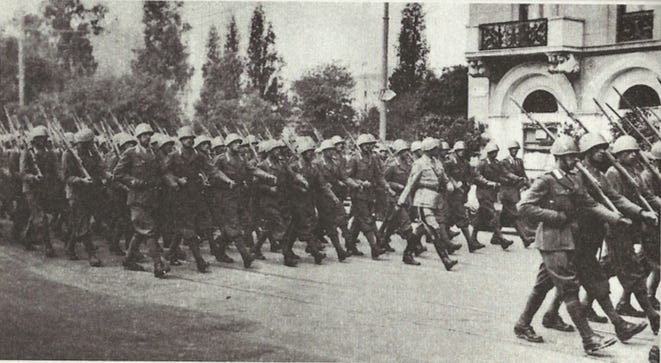


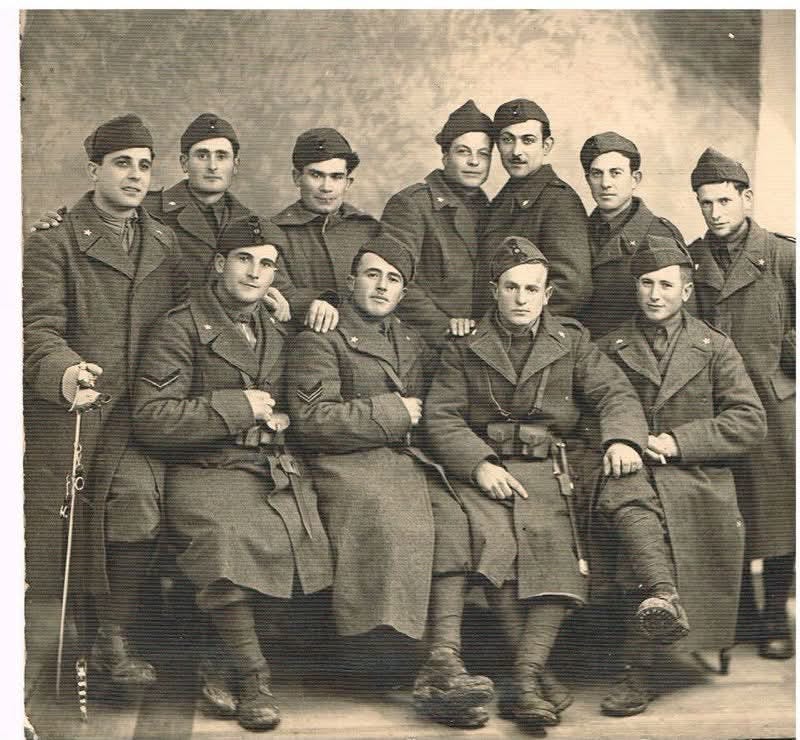

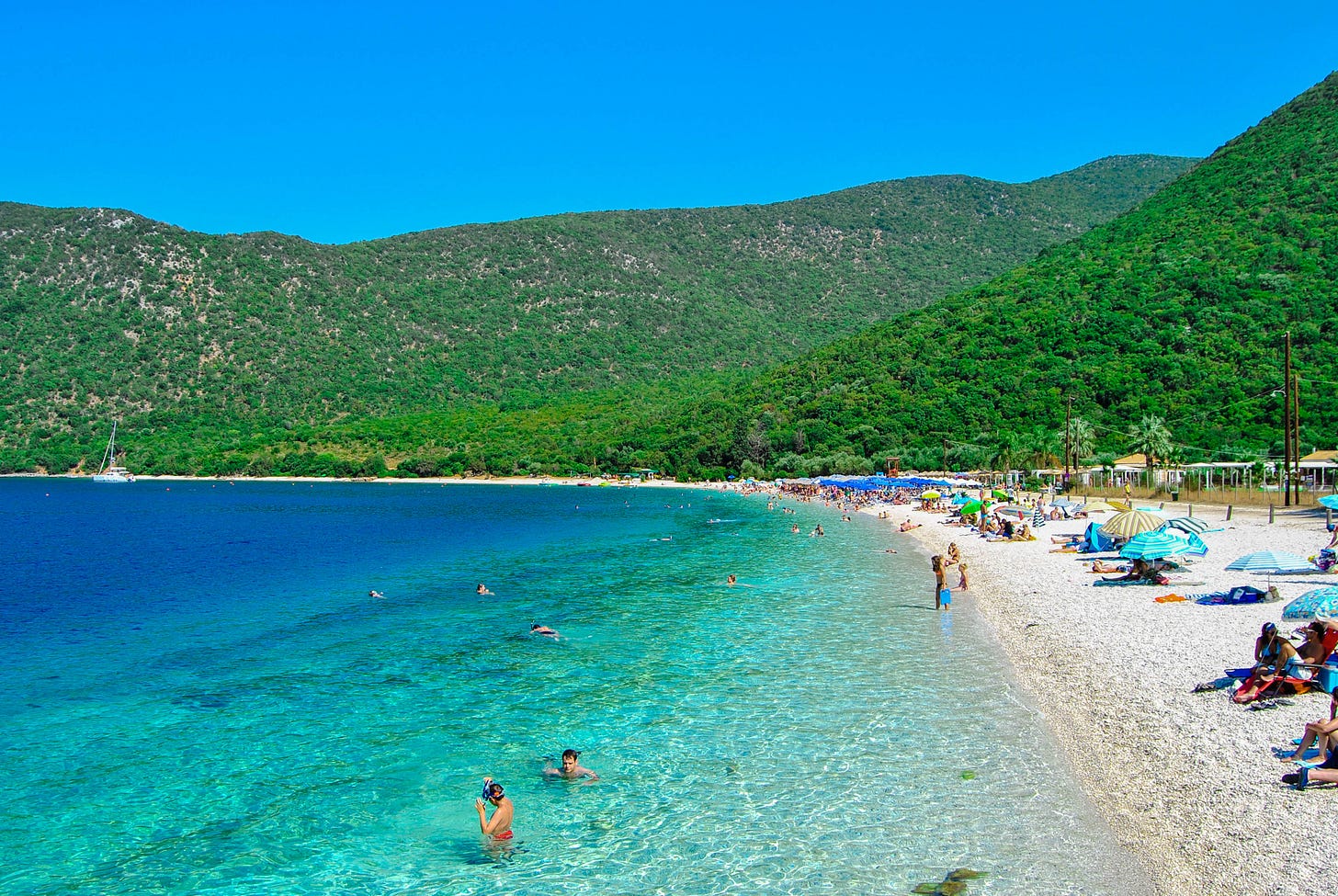
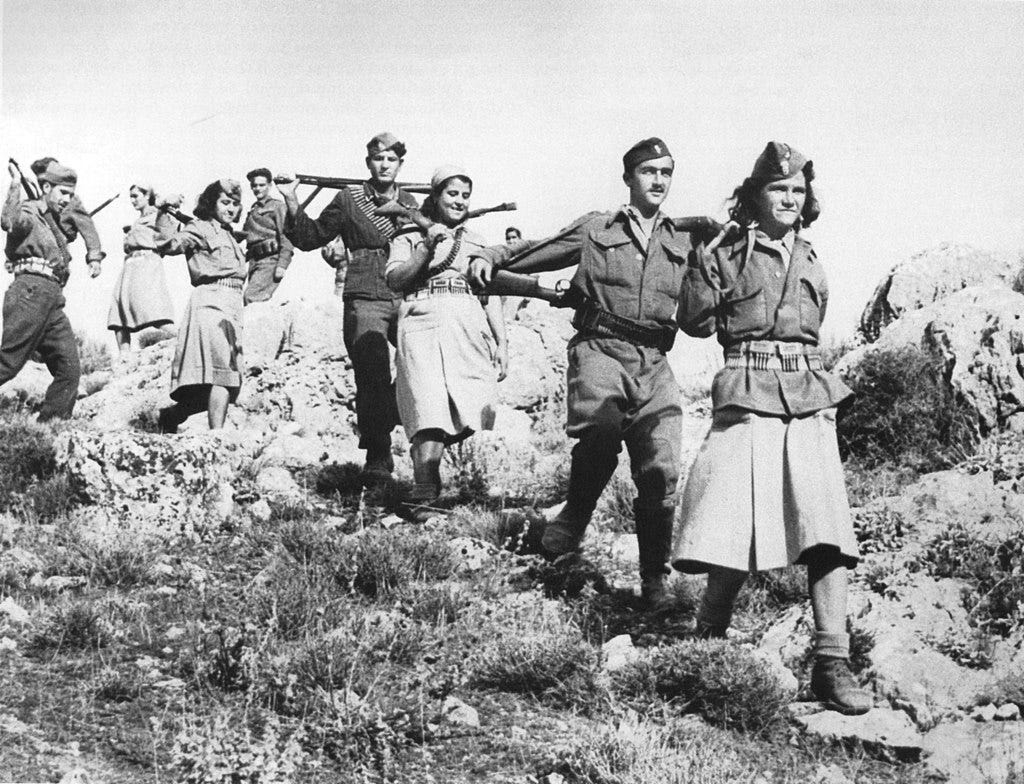
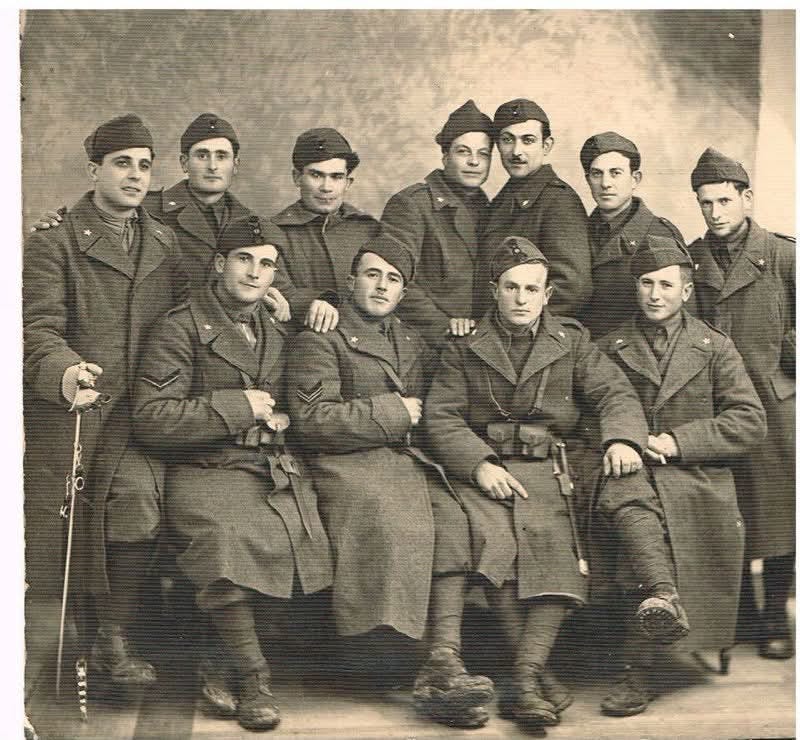
Interesting examples about Italians as more aggressive than they’re stereotypically depicted.
My grandmother’s recollection from Salonica was more like the stereotype though - she said the Italians wanted to preen their feathers and sing. The Germans were calling them pieces of shit and tended to be more ruthless. But we can gloss over the other examples too easily and it is important to point them out. It is too easy for people not just to see things in black and white terms, but to think they are the ‘good invader’ when that is really a non sequitur when we think about it.
The Greeks often like to describe Alexander in this way (he encourages intermarrying, was kinder to civilians than they were expecting). We probably lack lots of accounts on the other side which would say the polar opposite. It would be interested to hear about that if you study him. I didnt get to do paper on Alexander at uni, as the papers were quite strictly prescribed, but as you can imagine I wanted to know more, so I did a couple of postgraduate ones, two on the Byzantine period / Constantinople and one on Alexander (just a couple of months at Birkbeck). I think it could have easily been a whole year.
The best historical 'good invader' I can think of is the Allied invasion and occupation of Iceland, which took place after Germany removed the lawful government in Denmark, had no casualties, provided massive economic development for the island, and resulted in what many Icelanders refer to as the blessað stríðið or 'Lovely War.'